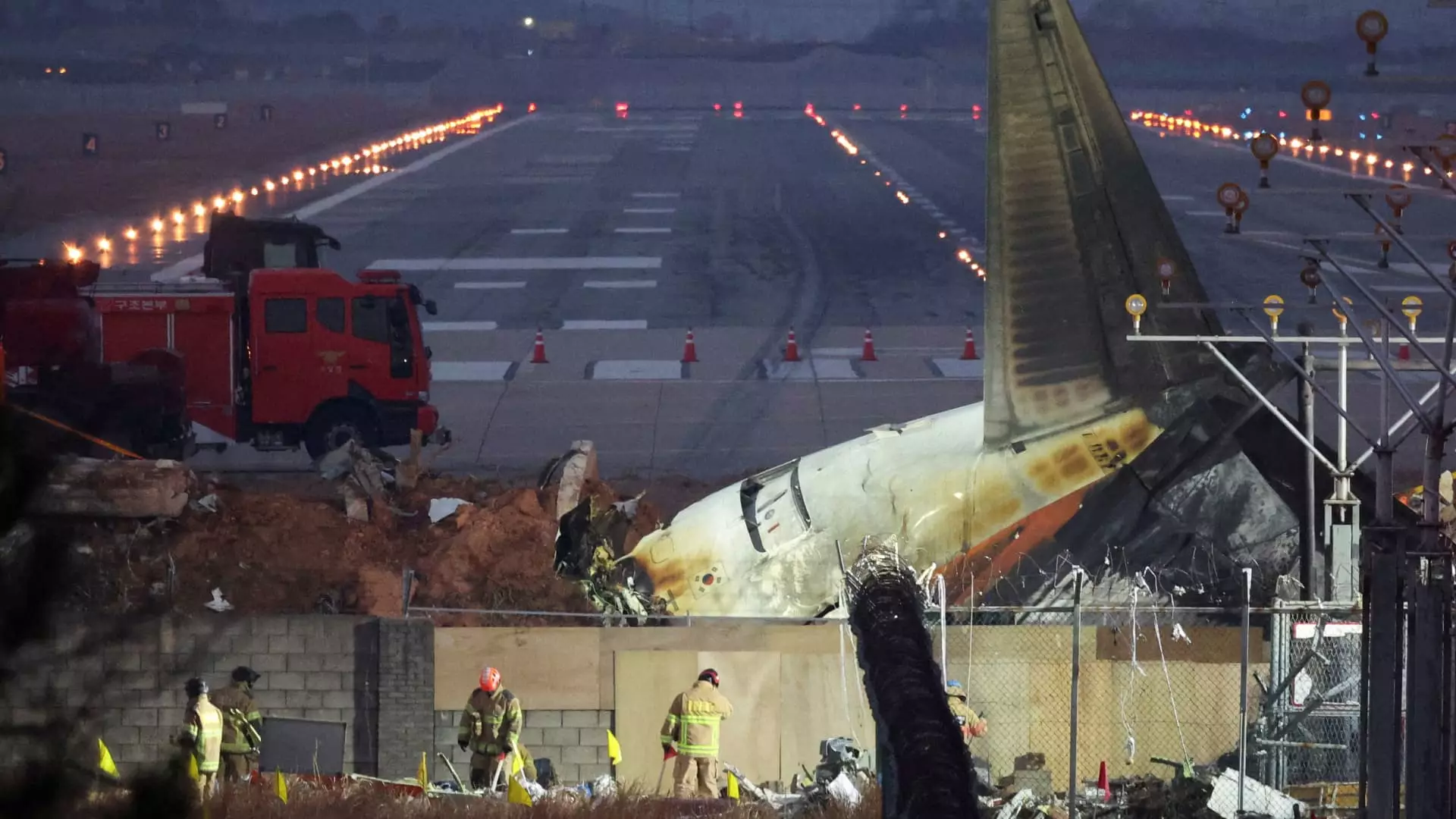The recent crash of Jeju Air Flight 7C2216 has sparked intense scrutiny regarding the design and safety protocols at airports. This tragic event, which occurred on a Sunday morning, resulted in the loss of 179 lives out of the 181 passengers and crew aboard the Boeing 737-800. The aircraft’s landing was compromised, likely due to retracted landing gear and flaps, culminating in a catastrophic belly landing that ignited a fire upon impact with a mound of dirt and a concrete wall positioned beyond the runway’s end. This harrowing event marks South Korea’s most fatal air disaster to date, raising pivotal questions about airport safety measures and design.
While the National Transportation Safety Board (NTSB) and aviation experts work tirelessly to determine the exact causes of this disaster, the initial findings suggest a complex interplay of factors contributed to the crash. Notably, a bird strike is being investigated as a prime suspect for potential engine failure, leading to an urgent inquiry into the plane’s maintenance logs and flight crew schedules. Todd Curtis, an aviation safety expert, emphasizes that the presence of infrastructure at the runway’s end—designed to guide landings—may have significantly complicated the aircraft’s deceleration process, exacerbating the severity of the incident.
Experts have pointed out that the design of airport runways, particularly the barriers in place, plays a crucial role in ensuring safety during landings. In various parts of the world, including high-traffic airports like LaGuardia in New York, engineered material arresting systems (EMAS) are deployed to absorb the impact of overrunning aircraft, effectively preventing further accidents. Contrarily, the concrete barrier located at Muan International Airport did not possess similar safety features and was reportedly not frangible, meaning it could not disintegrate upon impact. This lack of adequate safety measures contributed to what many experts believe were preventable fatalities.
Given the investigation’s preliminary nature, it is premature to definitively attribute blame; however, the repercussions of this incident extend beyond the immediate tragedy itself. The accident has prompted a reevaluation of current runway safety standards across South Korea and globally. The aviation community is now faced with the challenge of learning from such disasters to prevent future tragedies and ensure improved safety protocols. As aviation safety consultant John Cox noted, the potential blunt force trauma inflicted upon passengers by hitting the wall may have led to the high fatality rate—a scenario which experts argue could have been mitigated with proper engineering measures in place.
The Jeju Air Flight 7C2216 disaster serves as a somber reminder of the vital importance of rigorous safety standards and innovative designs in aviation. With ongoing investigations expected to play a significant role in shaping future policies, it is imperative that the aviation industry collectively reflect on these lessons learned to safeguard the lives of passengers and crews alike.

